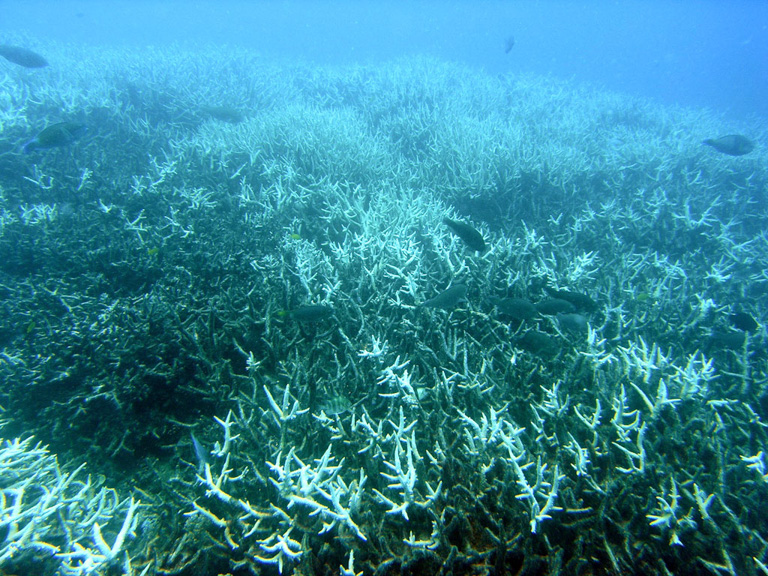- New research has identified five potential phases, or “regimes,” of coral reef health, helping scientists and ecosystem managers better assess the condition of reefs.
- The study also revealed that certain transitions from one phase to another were more likely to result from human-induced changes to the ocean.
- The authors of the study say the research could help identify new opportunities to save and improve the health of reefs.
When a vibrant coral reef teeming with life transforms into a barren skeleton in the tropical shallows — as a result of bleaching linked to climate change, for example — it might seem like someone flipped a switch. One moment the reef is alive, and the next, it’s dead.
That’s how scientists have typically treated declines in coral reefs around the world, but new research suggests that reef health is more nuanced.
“What if doctors believed that people are either healthy or dead, with no in-between states?” Kendra Karr, a senior scientist with the Environmental Defense Fund, said in a statement. “They would be missing a lot of opportunities to prevent death.”

Instead of looking only at what makes up the reef itself, Karr and her colleagues from institutions in Australia, Sweden, the U.K. and the U.S. also included analyses of the communities of fish that live around reefs, leading the team to identify five potential phases, or “regimes,” of coral reefs. They published their findings Nov. 16 in the journal Scientific Reports.
“Just like we need different treatments to address our individual illnesses as patients, each coral reef phase may need a different approach to recovery,” Karr said. The authors write that recognizing these unique states will help scientists home in on the tipping points at which seismic changes occur in reefs as a result of environmental conditions. That information could provide new opportunities to intervene and improve the health of the ecosystem.

The researchers’ analysis involved corralling data from monitoring programs in the Hawaiian Islands, representing 3,345 individual surveys at more than 1,000 sites. They drilled down into the data to look at the health of the coral reef, incorporating the number of coral species and the types of algae found living on it. They also pulled in measures of fish biomass, as well as the different groups of fish that were present.
“Insights from past studies such as how reductions in fish population can affect the basic processes that keep coral reefs healthy, and how managing fisheries is crucial for maintaining healthy coral reef communities, helped inform this new study,” Karr wrote in a blog post.

For example, research has shown that a dip in the numbers of herbivorous fish, such as parrotfish, around a reef can allow some algae species to increase and damage the coral that anchor the ecosystem.
The team found that there were two phases with low levels of coral in the Hawaiian Islands, one with similarly low levels of fish but another that had lots of fish. They also found that reefs with high densities of coral could be divided into three other regimes. Their work revealed that certain transitions from one phase to another were more likely to result from human-induced changes to the ocean.

“What’s exciting about this report is that these five phases have the potential to be used by fishery managers and citizen scientists around the world as a tool to understand the coral reefs that support local fisheries,” Karr wrote in the blog post.
She also pointed out that the outlook for coral reefs globally wasn’t entirely gloomy. Indeed, Karr said, many are on the mend.
“What’s more,” she added, “even reefs identified as being negatively impacted by issues like bleaching, overfishing and storm impacts can recover.”
Banner image by Holobionics via Wikimedia Commons (CC 4.0).
Citation
Donovan, M. K., Friedlander, A. M., Lecky, J., Jouffray, J. B., Williams, G. J., Wedding, L. M., … & Kappel, C. V. (2018). Combining fish and benthic communities into multiple regimes reveals complex reef dynamics. Scientific Reports, 8(1), 16943.
FEEDBACK: Use this form to send a message to the author of this post. If you want to post a public comment, you can do that at the bottom of the page.
